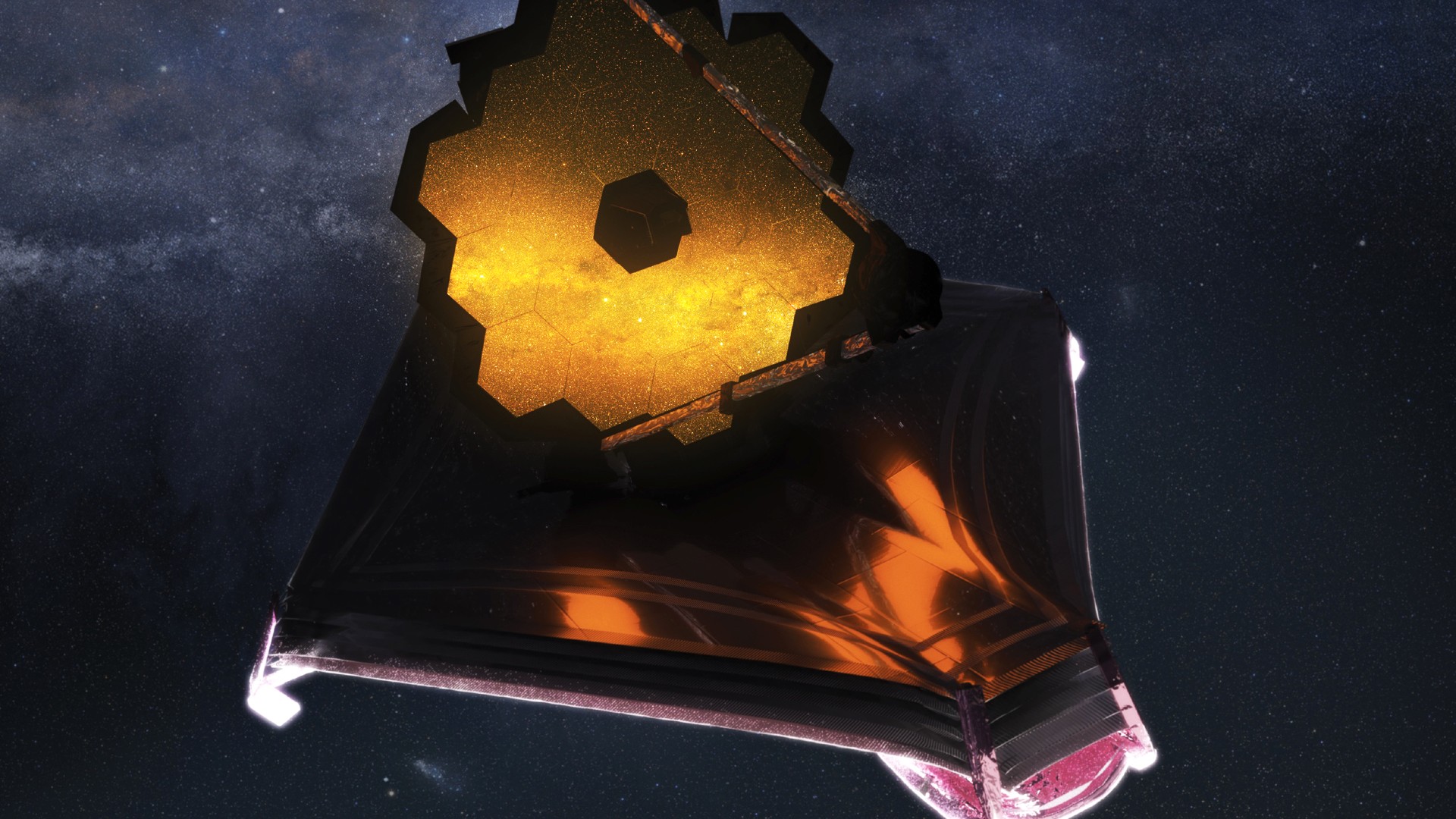Overview
The James Webb Space Telescope (JWST) is a collaborative project between NASA, the
European Space Agency (ESA), and the
Canadian Space Agency (CSA). Launched on December 25, 2021, aboard an Ariane 5 rocket, JWST is positioned at the Sun–Earth L₂ Lagrange point, approximately 1.5 million kilometers from Earth. This location provides a stable environment for its infrared observations, shielded from the Sun's heat and light.
Design and Instruments
JWST features a 6.5-meter gold-coated beryllium primary mirror composed of 18 hexagonal segments, significantly larger than the 2.4-meter mirror of the Hubble Space Telescope. This expansive mirror allows JWST to collect more light, enabling the observation of faint and distant celestial objects. The telescope is equipped with four primary scientific instruments:
- –Near Infrared Camera (NIRCam): Captures images in the near-infrared spectrum.
- –Near Infrared Spectrograph (NIRSpec): Performs spectroscopy over a wide range of near-infrared wavelengths.
- –Mid-Infrared Instrument (MIRI): Observes in the mid-infrared range, essential for studying cooler objects.
- –Fine Guidance Sensor/Near InfraRed Imager and Slitless Spectrograph (FGS/NIRISS): Assists in precise pointing and conducts additional spectroscopic observations.
Mission Objectives
JWST's mission encompasses several key scientific goals:
- –Early Universe Exploration: Investigate the formation of the first galaxies and stars by observing light from the early universe.
- –Galaxy Evolution: Study the assembly and growth of galaxies over cosmic time.
- –Star and Planet Formation: Examine the birth of stars and planetary systems.
- –Exoplanet Atmospheres: Analyze the atmospheres of exoplanets to assess their potential habitability.
Notable Discoveries
Since commencing operations in July 2022, JWST has made significant contributions to astronomy:
- –
New Moon of Uranus: In August 2025, JWST discovered a previously unknown moon orbiting Uranus, designated S/2025 U1. This small satellite, approximately 10 kilometers in diameter, was detected using JWST's Near-Infrared Camera. The discovery increased the total number of Uranus' known moons to 29. (
livescience.com)
- –
Fast Radio Burst Localization: JWST pinpointed the origin of the brightest fast radio burst (FRB) ever detected, named FRB 20250316A. The telescope traced the FRB to a specific region within the galaxy NGC 4141, about 130 million light-years away, providing insights into the environments where such bursts occur. (
livescience.com)
- –
Asteroid Origins: Observations by JWST suggest that asteroids Bennu and Ryugu may have originated from the same parent asteroid that disintegrated billions of years ago. Both asteroids share similar compositions with asteroid 142 Polana, indicating a common origin. (
livescience.com)
Operational Challenges and Longevity
JWST operates in a challenging environment, requiring precise temperature control and alignment of its instruments. The telescope's sunshield maintains its instruments at cryogenic temperatures necessary for infrared observations. While the primary mission duration was planned for 10 years, efficient fuel usage and operational management may extend its lifespan beyond initial expectations.
Impact on Astronomy
JWST's advanced capabilities have revolutionized our understanding of the universe. By observing in the infrared spectrum, it can peer through cosmic dust clouds, revealing previously hidden aspects of star formation and galaxy evolution. Its contributions continue to shape the field of astrophysics, offering unprecedented insights into the cosmos.
